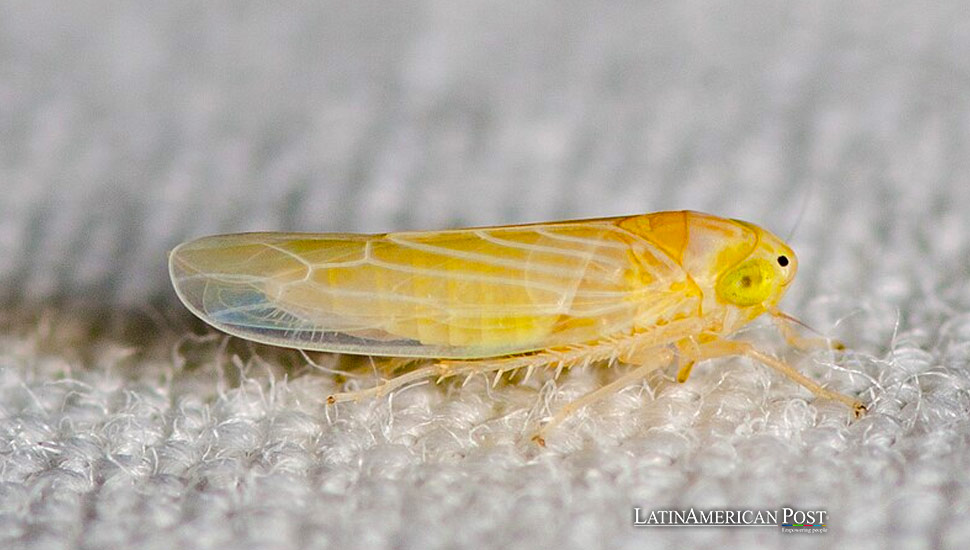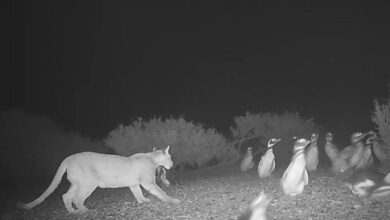Argentine Scientists Sequence Corn Leafhopper Genome for Better Pest Control

Argentine researchers have successfully sequenced the corn leafhopper Dalbulus maidis genome, marking a significant milestone in developing more effective strategies to combat this insect that causes severe damage to maize crops.
In a groundbreaking achievement, a team of Argentine scientists has successfully sequenced the genome of the corn leafhopper Dalbulus maids. This insect, commonly known as the corn leafhopper, has been a significant pest in Argentina, the world’s second-largest maize exporter. The sequencing of its genome opens new avenues for more effective pest control strategies, potentially mitigating the substantial agricultural losses caused by this pest.
Researchers from the Centro de Investigaciones Agropecuarias at the Instituto Nacional de Tecnología Agropecuaria (INTA) accomplished the corn leafhopper genome’s sequencing, assembly, and annotation. This achievement is expected to significantly impact the management of this insect, which has wreaked havoc on maize crops during the latest agricultural season.
The corn leafhopper is notorious for transmitting spiroplasma, a disease that severely affects the grain-filling process in maize plants. This results in stunted growth and irreversible crop damage, known as “maize stunting.” The ability to sequence the genome of this pest is a crucial step in understanding its biology, distribution, and evolution, which are essential for predicting and mitigating future outbreaks and epidemics.
The researchers believe that the detailed genetic information provided by genome sequencing will enable the development of more targeted and efficient pest control methods. “This genomic information will allow us to understand the immunity genes of the insect, identify potential targets for better insecticide development, and understand the genes associated with its interaction with infected plants and pathogens,” said an INTA spokesperson.
A Boost for Maize Genetic Improvement
The implications of this research extend beyond immediate pest control. The genetic data gathered can be instrumental in improving the genetics of maize itself. By understanding the interaction between the corn leafhopper and maize, scientists can develop maize varieties that are more resistant to the diseases transmitted by this insect. This could lead to a significant reduction in crop losses and improve the overall yield and quality of maize in Argentina and other affected regions.
This scientific breakthrough comes at a critical time for Argentine agriculture. Maize is a crucial crop for the country, and any improvement in pest control and crop resilience has far-reaching economic and food security implications. The ability to develop maize varieties that are inherently resistant to pests and diseases could transform agricultural practices, reduce dependency on chemical pesticides, and promote more sustainable farming methods.
The Road Ahead
The successful sequencing of the corn leafhopper genome represents a significant leap forward in agricultural biotechnology. The INTA team’s work will pave the way for further research and development in pest control and crop improvement. However, the journey from genome sequencing to practical applications in the field involves several steps.
Firstly, researchers must conduct detailed studies to identify the genes responsible for the corn leafhopper’s resistance to various control measures. This involves understanding the molecular mechanisms that allow the insect to thrive and spread diseases. Once these genes are identified, scientists can develop targeted insecticides that are more effective and environmentally friendly.
Moreover, genetic information can help breeding programs create maize varieties that are less susceptible to the corn leafhopper. This process involves using traditional breeding techniques, possibly augmented with modern genetic engineering methods, to introduce resistance traits into maize plants. The goal is to produce crops that can withstand the pests without the need for excessive pesticide use, thereby promoting a more sustainable agricultural ecosystem.
Latin American Context and Broader Implications
Argentina’s success in sequencing the corn leafhopper genome could serve as a model for other Latin American countries facing similar agricultural challenges. The region is a significant producer of various crops, and pests continually threaten farm productivity and economic stability. Collaborative efforts and knowledge sharing among Latin American nations can enhance regional food security and foster pest management and crop resilience innovations.
The achievement also underscores the importance of investing in agricultural research and development. As climate change and other environmental factors continue to impact agriculture, having robust scientific capabilities to address emerging challenges is crucial. Governments and agricultural institutions across Latin America can look to Argentina’s example to strengthen their research initiatives and ensure the sustainability of their agricultural sectors.
Additionally, the broader implications of this research highlight the interconnectedness of global food systems. Pest outbreaks in one part of the world can have ripple effects on international food markets, impacting prices and availability. Countries can contribute to a more stable and secure global food supply by developing effective pest control strategies and resilient crop varieties.
Also read: Argentina Faces Recession and Job Losses Amid Austerity Measures
Argentine researchers’ sequencing of the corn leafhopper genome is a landmark achievement with far-reaching implications for agriculture in Latin America and beyond. This scientific milestone promises more effective pest control measures and opens the door to significant advancements in crop improvement and sustainable farming practices. As the agricultural sector faces evolving challenges, such innovations will ensure food security and economic stability for future generations.





